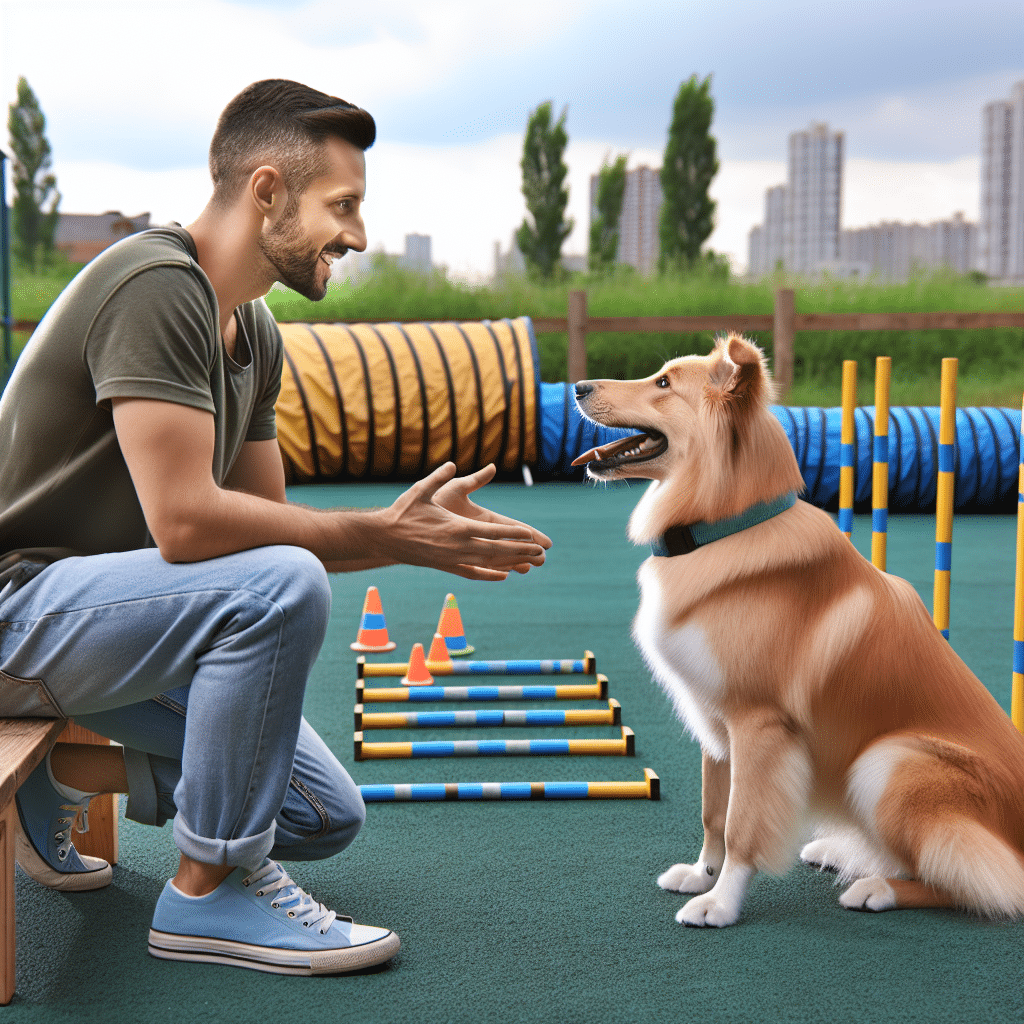Understanding the Importance of Mental and Physical Stimulation
Dogs are intelligent animals that require both mental and physical stimulation to lead happy, balanced lives. Without adequate exercise or cognitive challenges, dogs may display behavioral issues such as excessive barking, chewing, or digging. This article presents a variety of training tips designed to engage your dog both mentally and physically, ensuring a well-rounded and fulfilling lifestyle.
Daily Exercise Routine
Set a Regular Schedule
Creating a structured exercise schedule is vital. Dogs thrive on routine, which helps them anticipate activities. Aim for at least 30 to 60 minutes of exercise daily, depending on your dog’s breed, age, and health.
Interactive Walks
Turn your daily walks into adventures. Allow your dog to explore new routes or visit local parks. Incorporate varied terrains and different smells to keep their interest piqued.
Agility Training
Agility training is a fantastic way to combine physical exercise with mental stimulation. Set up an obstacle course in your backyard or sign up for local agility classes. Teach your dog to navigate tunnels, jumps, and weave poles.
Engaging in Play
Fetch Variations
Playing fetch is a classic dog activity but can be enhanced for stimulation by using different toys—frisbees, balls, and even sticks. Change the environment to keep fetch exciting; parks, fields, or your backyard can all provide different experiences.
Tug-of-War Games
Tug-of-war is another excellent way to engage your dog physically. Use sturdy ropes and remember to follow the rules: teach your dog to ‘drop it’ and reward them for good behavior during play.
Hide and Seek
This game isn’t just for kids! Hide and seek stimulates your dog’s natural instincts. Have your dog sit and stay, then hide somewhere in your home. Call your dog and reward them when they find you.
Puzzle Toys and Games
Treat-Dispensing Toys
Puzzle toys can keep your dog occupied for extended periods. Fill these toys with treats or kibble and watch your dog strategize to retrieve the rewards. Brands like Kong or Nina Ottosson provide a range of options for different difficulty levels.
DIY Puzzle Games
You can create your own puzzles using household items. For instance, place treats under plastic cups and shuffle them around, or use muffin tins filled with balls covering treats.
Scent Games
Engage your dog’s natural sniffing instincts by hiding treats around your home or yard. Encourage your dog to use their nose to find their favorite snacks, which promotes both mental engagement and physical activity.
Obedience Training
Basic Commands
Start with basic commands like sit, stay, come, and down. These commands serve foundational purposes and reinforce your dog’s behavior. Use positive reinforcement techniques such as treats or praise to reward compliance.
Leash Training
Teaching your dog to walk nicely on a leash is essential for enjoyable walks. Use a short leash and practice commands to have them walk beside you. This technique encourages focus and discipline.
Advanced Tricks
Once your dog has mastered basic commands, move on to advanced tricks like spin, roll over, or play dead. This not only provides mental stimulation but also strengthens your bond.
Socialization Activities
Dog Parks
Regular visits to dog parks can expose your dog to different breeds and temperaments, which is crucial for social skills. Supervised play with other dogs can provide necessary physical exercise.
Group Classes
Enrollment in group training classes can be beneficial for both socialization and training. Here, dogs learn to interact with various dogs and people while mastering new commands or skills.
Dog-Friendly Events
Look for local dog-friendly events like charity walks or dog shows. These events provide a perfect opportunity for socialization and can make your dog comfortable in a variety of situations.
Incorporating Enrichment Activities
Obstacle Courses
Create a makeshift obstacle course using household supplies. Use furniture, cardboard boxes, and hula hoops to challenge your dog physically and mentally.
Nature Hikes
Take advantage of the great outdoors by incorporating longer hikes into your routine. Vary the location for new sights and smells to keep things interesting. Always remember to bring water for hydration.
Training for Tasks
Teach your dog fun tasks like fetching the newspaper or turning off lights. These activities engage their minds and offer a sense of purpose, making their daily routine more fulfilling.
Health and Nutrition
Balanced Diet
A well-balanced diet contributes to overall well-being. Consult with your veterinarian to determine the right food and portion sizes tailored to your dog’s specific needs.
Hydration is Key
Ensure your dog has constant access to fresh water, especially after activities. Hydration is crucial after physical exertion, particularly in warmer weather.
Regular Vet Check-ups
Regular veterinary visits can help identify any underlying health issues that may affect your dog’s energy levels and overall fitness.
The Role of Consistency and Patience
Reinforce Learning
Consistency in commands, routines, and expectations is crucial in dog training. Make sure all family members use the same commands and reward systems to avoid confusion for your dog.
Patience is Key
Training is a gradual process. Celebrate small victories and remain patient during setbacks. Dogs thrive best in environments that are positive and nurturing.
Keeping Track of Progress
Journaling
Keep a training journal to note your dog’s achievements and areas needing improvement. Tracking progress can help identify effective techniques and stimulate continued growth.
Regular Evaluations
Periodically assess your training goals and adjust them as necessary. As your dog learns and matures, their needs and capabilities may change.
Continuing Education
As your dog masters skills, keep updating the training regimen with more complex behaviors and challenges to keep their minds and bodies engaged.
By following these tips and techniques, you can significantly enhance your dog’s mental and physical stimulation, paving the way for a happier and healthier canine companion.
